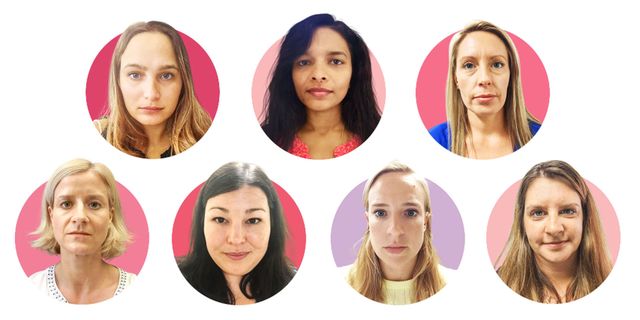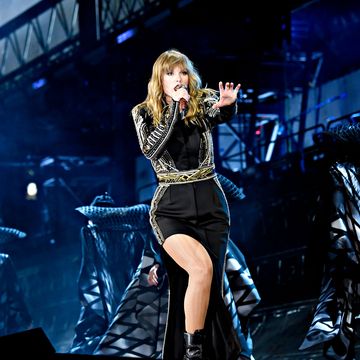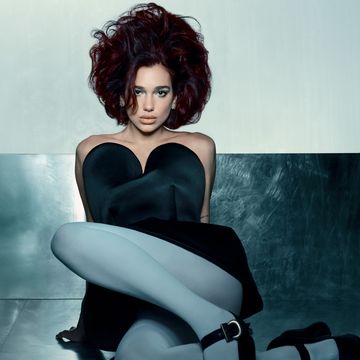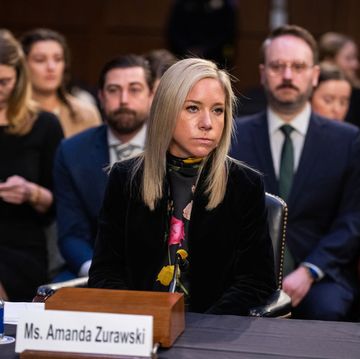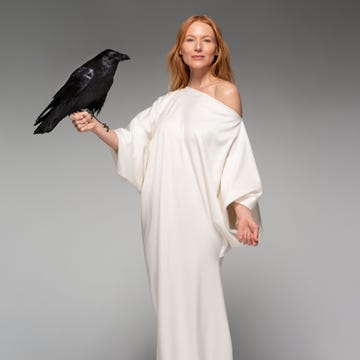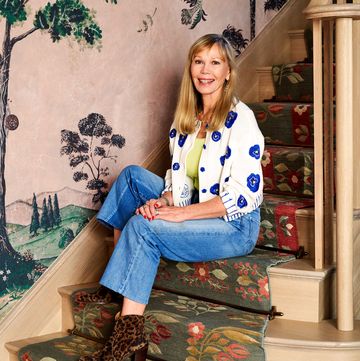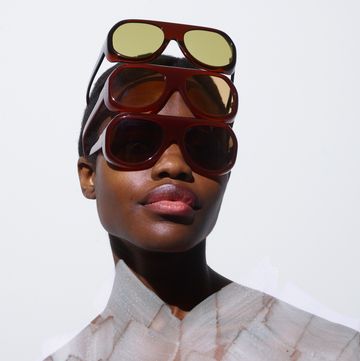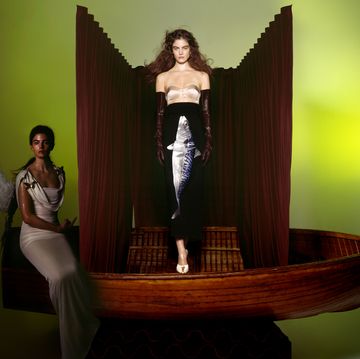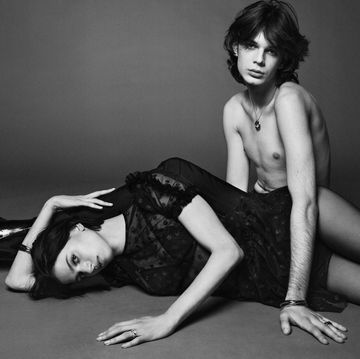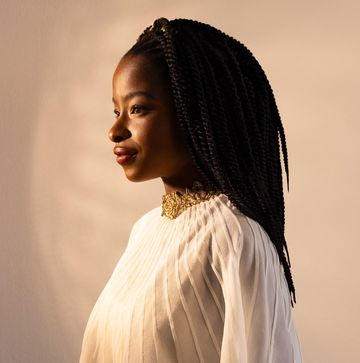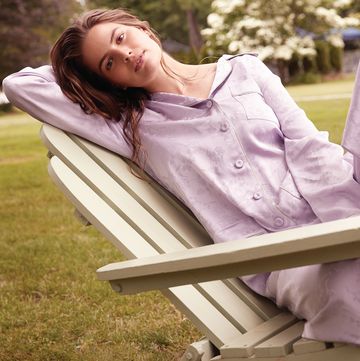This article originally appeared in the November 2016 issue of ELLE.
"Whose intern are you?" an ELLE fashion intern asked one afternoon a few weeks ago, breaking the silence as we rode the elevator.
Do I lack the commanding presence of an actual employee? Maybe. But that question didn't even cross my mind. "I actually work here," I said, not the least bit displeased despite the fact that the misidentification knocked me years back in my career.
"Oh, I thought you were, like, 20."
"Nope, 31!" I declared proudly.
How old one looks often has little to do with how old one looks. I have a feeling people glance at me, and in that .6947 seconds it takes to form a (wholly unscientific) judgment, they're more influenced by my shiny Disney princess sticker–adorned notebook and my zanily patterned culottes than by what's actually happening on my face. But if you want to know—and address—what is really happening on your face, sometimes the human eye (especially one's own) feels a little too fallible. Olay Skin Advisor, the brand's just-launched online complexion assessor*, is designed to deliver the cold, hard truth: You log in, take a makeup-free selfie in even lighting, and answer a brief questionnaire about your skin-care preferences and current regimen. The computer analyzes your photo, deducing your "best" areas, "improvement" areas, and how old your skin actually appears—more on this in a second—and then lists corresponding product recommendations. The point is not to depress or elate, but rather to eliminate drugstore-aisle angst: Now you can use actual facts—not just how obsessed you happen to be with those (real or imagined) enlarged pores/forehead lines at any given moment—to ascertain your skin-care needs.
Sounds straightforward enough, but teaching a computer to judge something as variable as the human face is incredibly complex. Advisor is based on a school of artificial intelligence called deep learning, which is not totally unlike the process that went into building Samantha, the disembodied techno–Scarlett Johansson that Joaquin Phoenix fell for in Her. Samantha is a computer operating system who talks and feels and thinks like a free agent; she can even grasp abstractions, such as miffed undertones in a conversation. Similarly, Advisor appears to have a range of thinking that surpasses what we imagine to be programmable. Deep learning, a type of machine intellect that uses algorithms to transmit information in both linear and nonlinear ways, is inspired by the way the human brain processes visual information. Just as a baby, looking at dog after dog after dog, learns to piece together the fact that a certain type of snout, fur, and paws make up...a dog!, deep learning uses multiple cognitive layers to identify an image.
"The lower layers are doing simple processing tasks, such as detecting edges and spots; those detected low-level features are fed into the next layer, which can combine those edges and spots into more complex shapes; those shapes are in turn fed into a higher layer, and so on," says Jun Xu, PhD, Procter & Gamble principal scientist of bioinformatics and one of the creators of Advisor. Facebook employs deep learning to identify and auto-tag your friends; Google's search function, Apple's Siri, and self-driving cars also rely on the process. Further proof that deep learning is the future: Intel recently purchased deep learning–savvy start-up Nervana Systems, reportedly for more than $400 million.
For its initial tests, Olay fed thousands of faces of women ages 18 and over of all ethnicities into Advisor; now that the company is launching the program globally, it's hoping to get to 500,000 faces by the end of December. Olay engineers didn't program Advisor to seek signs of aging; rather, the program uses its growing database to continually layer new attributes and imperfections into its perceptions of the face, in order to deeply understand all the variations of, say, the 27-year-old face, and thereby differentiate it from one that reads as 26 or 28—or 68. "Every time it receives a new selfie, it fine-tunes its knowledge of what the face of a certain age looks like, essentially growing smarter with every use," says Olay principal scientist Frauke Neuser, PhD. Advisor rates overall skin texture as well as five key zones (forehead, cheek, chin, crow's-feet, undereye) and then, says Neuser, "combines all of this to make the best guess."
To test Advisor's accuracy, in March 2016 Olay took the program to the American Academy of Dermatology convention to pit it against the skin-age–assessing powers of 350 dermatologists. Advisor proved more accurate than doctors 94 percent of the time.
But accuracy can be a bitch. Perhaps it was that life-affirming elevator interaction, but I submitted myself to Advisor with zero hesitation. The machine's verdict: I look 29. My crow's-feet are my "best area"; undereye is my "improvement area," for which the computer recommended Olay Ultimate Eye Cream.
I know what you're thinking: Great! What's the problem? But the verdict stung ever so slightly. And a colleague whose actual age is 39 but whose Advisor age is 36—with room for improvement identified around her mouth, an area she'd never given much thought to—experienced a similar rush of angst. Point is, good news still feels a little bad, in that even if you're aging well, there's no doubt: You are aging. Blame our culture—heck, blame women's magazines—but ridiculous as it sounds, it's hard not to hear that as confirmation of a negative. But hey, it beats the alternative! "The tool isn't telling a woman something she's never thought before," Neuser says. "Advisor is simply looking at you and taking away the human bias." My takeaway: I'm all for technology that helps me figure out the smartest way to take care of my skin. But let's hold tight to the adage "Age is but a number."
* Olay's tool is not yet available in all regions but will be soon.
